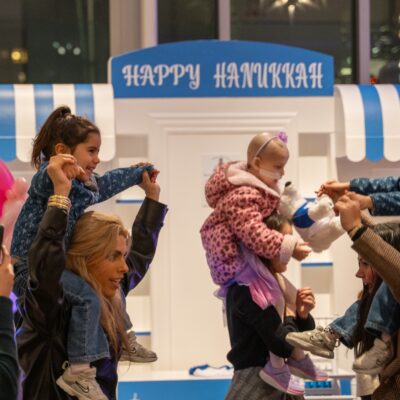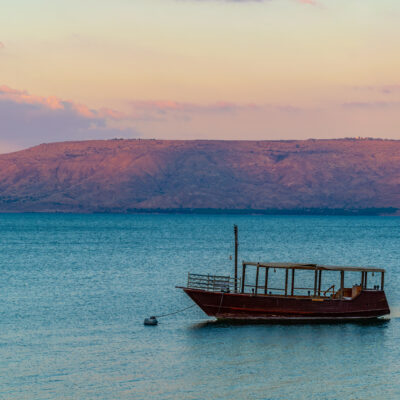Let’s Make Chanukah More Like Christmas
A bunch of rabbis sit over rugalach and egg creams (chocolate phosphates here in Chicago) and laugh about congregants concerns regarding the English spelling of the Hebrew word for dedication – Chanukah. They also complain among themselves that many of their congregants are making Chanukah the Jewish Christmas. What exactly is wrong with that? While Christmas may be the celebration of, according to Judaism, a false messiah’s birth, ultimately it celebrates the desire for redemption, which is a very Jewish aspiration. At the same time, Chanukah is a celebration of the zealotry of the Hashmonaim and their patriarch, Mattitiyahu, who fanatically killed a fellow Jew, not to mention the civil wars under their dynasty.
For those who say it is a Festival of Lights, which it is, this adaptation of an already established holiday is the work of our rabbis, who created a myth to redirect the focus of celebration. Basically, this is what the congregants are doing now when they move away from a narrative of divine intervention involving oil to a celebration that makes winter a bit more palatable. It’s what liberal Jews do when they make this a celebration of the struggle for religious freedom. It’s also what the early Zionists did when they returned to Chanukah as a celebration of nationalism and Jewish militarism. We change the meaning of our celebrations to meet our needs.
The earliest celebrations of Chanukah can be studied in the Maccabee tome, where it says that the Hashmonaim were still in caves during Tishrei, when they should have been celebrating the Festival of Booths, Sukkot, thus the eight days of Hanukah (for all who thought that it was just a 33% discount on the twelve days of Christmas). In essence, their need was to fulfill a religious obligation.
Years later, the rabbis came up with their own explanation for these eight crazy nights. Why is this important? Because it illustrates that ritual is not set in stone tablets or frozen in time. For the Maccabees, the eight days of Hanukah were a delayed religious festival. For the Talmudic sages, changing the rituals surrounding Chanuka became an opportunity to refocus Jewish belief and infuse it with joy after losing sovereignty in their land. After all, if Jewish understandings of history are perceived as faulty or don’t satisfy the needs of the public, then these guys are out of a job.
Ironically, the Mishnaic rabbis lived under occupation in the land of Israel when they argued about how to light the Chanukiah, the nine-armed candelabra.
Those who seek to fulfill the law in the best possible manner should light according to Beit Shammai the first night eight flames, and every following night one flame less. And according to Beit Hillel the reverse – the first night one lamp, and be increased by one on each succeeding night.
One could say that Beit Hillel was trying to create hope from a hopeless situation, while Beit Shammai was more cynical. You could also tie the ritual to the myth created by the rabbis.
When the Hellenists entered the sanctuary, they defiled all the oil that was found there. When the government of the House of Hasmoneans prevailed and conquered them, oil was sought and only one vial was found with the seal of the high priest intact. The vial contained sufficient oil for one day only, but a miracle occurred, and it fed the holy lamp eight days in succession. These eight days were the following year established as days of good cheer, on which psalms of praise and acknowledgment were to be recited. (Babylonian Talmud, Tractate Shabbat, Chapter 2)
These same rabbis taught, “It is a merit to put the Hanukah lamp on the outside door of the house; and he who lives in an attic puts it in a window that opens into the street.” While this satisfied a longing for the assertion of Jewish pride, they also had special dispensations, “In time of danger, however, it is sufficient if the lights are on the table.” What can we learn from this? That context is everything. We have always been adaptable, and this needs to continue.
Chanukah emulates Christmas because Christmas is a time for celebration in the middle of winter. It is a time for family to come together, to give gifts and to rejoice. None of these assimilating Jews are suggesting that we add handlebars to our mezzuzot to make them look like a crucifix. What they are doing is simply juggling their Jewish identities with the majority surrounding them and finding meaning in their heritage that conforms to the context of their lives. So if we learn anything from the rabbis who preceded us, let it be that adaptability keeps us strong and relevant, and if we need to put a fence around the Torah, and we really have misgivings about Christmas, we can always decide to leave eggnog and Irving Berlin on the outside of the fence.
David Steiner, Ed.D, is a mediator in Chicago and rabbinical student at the International Institute for Secular Humanistic Judaism.

 Add EJP on Google
Add EJP on Google










